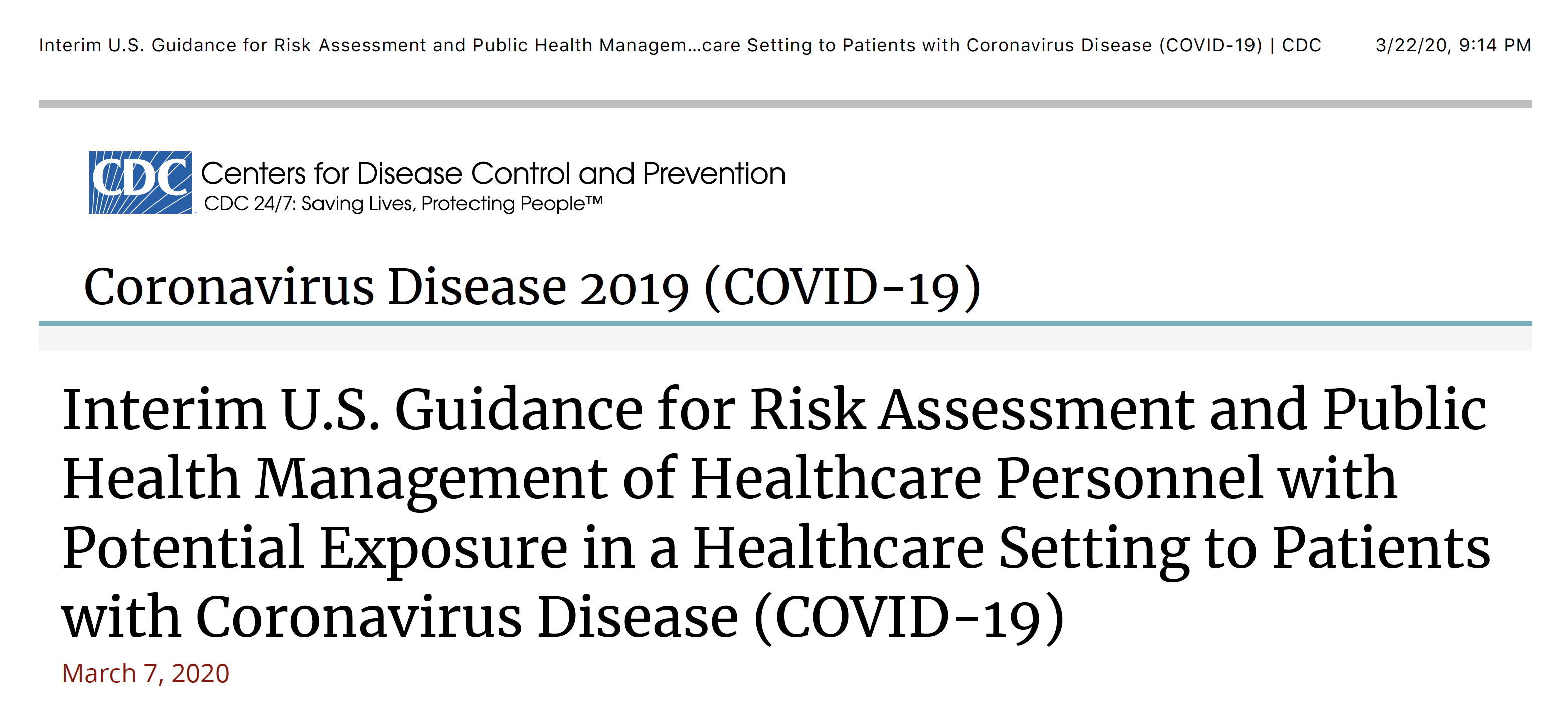*Note: This article conveys information from a professional medical paper, but is not meant to be used as a practical guideline in-and-of-itself. Instead, we encourage readers to read the linked CDC paper that the following article draws from.
Terms:
- HCP – Healthcare Personnel
- PPE – Personal Protective Equipment
The COVID-19 novel coronavirus needs no introduction, unfortunately. In the current pandemic, medical professionals are doing everything in their power to help those who have been affected on top of their usual duties and procedures that still need tending to.
Of course, the risks of a contagious disease make all aspects of the job more difficult. Every healthcare provider is doing the best with what little they have not to fall victim to the virus themselves or infect those in their care. Shortages in hospital equipment and PPE (personal protective equipment) only make matters more difficult for HCP (healthcare personnel) who are working in close proximity to those infected. To stay vigilant, medical staff must work under the assumption that everybody carries the virus.
The CDC has recently published an updated version of the paper titled “Interim U.S. Guidance for Risk Assessment and Public Health Management of Healthcare Personnel with Potential Exposure in a Healthcare Setting to Patients with Coronavirus Disease (COVID-19)“, which outlines the three risk levels of exposure to the novel coronavirus, and actions that healthcare providers must take according to each of the three levels.
The Three Risk Levels
The three risk levels of exposure are determined primarily by whether the healthcare provider and the patient are wearing masks (including respirators). The risk level is then augmented by additional factors which we will explore further in the next section. These definitions are directly from the CDC paper:
- High-risk exposures refer to HCP who have had prolonged close contact with patients with COVID-19
who were not wearing a facemask while HCP nose and mouth were exposed to material potentially infectious with the virus causing COVID-19. Being present in the room for procedures that generate aerosols or during which respiratory secretions are likely to be poorly controlled (e.g., cardiopulmonary resuscitation, intubation, extubation, bronchoscopy, nebulizer therapy, sputum induction) on patients with COVID-19 when the healthcare providers’ eyes, nose, or mouth were not protected, is also considered high-risk. - Medium-risk exposures generally include HCP who had prolonged close contact with patients with COVID-19 who were wearing a facemask while HCP nose and mouth were exposed to material potentially infectious with the virus causing COVID-19. Some low-risk exposures are considered medium-risk depending on the type of care activity performed. For example, HCP who were wearing a gown, gloves, eye protection and a facemask (instead of a respirator) during an aerosol-generating procedure would be considered to have a medium-risk exposure. If an aerosol-generating procedure had not been performed, they would have been considered low-risk. See Table 1 for additional examples.
- Low-risk exposures generally refer to brief interactions with patients with COVID-19 or prolonged close contact with patients who were wearing a facemask for source control while HCP were wearing a facemask or respirator. Use of eye protection, in addition to a facemask or respirator would further lower the risk of exposure.
Factors That Augment Risk Levels
While the presence of facemasks/respirators and the proximity to aerosol-generating procedures are the main factors in determining the risk level, there are other factors to be considered which affect the risk level either upwards or downwards. Obviously, the more of the precautions that are applied, the lower the risk level. These factors include:
- Duration of time near the infected patient. Being in close proximity to a patient for 2 minutes or longer increases your risk level
- Presence of additional PPE for healthcare providers like gloves, gowns, and eye protection
- Whether the HCP came into extensive physical contact with the patient
So while the HCP may have been wearing all the appropriate PPE and only seen the patient briefly, they may have had extensive physical contact with the patient during a live-saving procedure which upped their risk level from low to medium.
Calculating The Risk And Appropriate Action For Each Level
Table 1 of the CDC paper lays out the levels of risk when the above factors are combined. Any combination of PPE, length of exposure time, and physical contact with infected patients leads to an increased or decreased risk of exposure.
The HCP is assessed for their risk level based on the outline in the CDC paper, but the paper itself advises HCP to use their best judgement in determining risk factors as well. It is up to supervisors to take the appropriate action once the risk level is determined. Here is an abridged version of the recommended actions:
- Medium and High-risk exposure: HCP must undergo active monitoring as well as 14 days restriction from work from the point of last exposure. Additional actions must be taken if the HCP appears symptomatic.
- Low-risk Exposure: HCP must undergo active monitoring for 14 days after last exposure (essentially ongoing for HCP working regularly with COVID-19 patients). Again, additional actions must be taken if the HCP appears symptomatic.
The actions suggested for each risk-level of exposure demonstrate a strict policy meant to contain a problem with no immediate solution.
Conclusion
Doctors, nurses, medical staff, and related positions are our front-line protection against the coronavirus. Unfortunately, without the proper procedures and equipment, they’re just as vulnerable as anybody else. Our success in handling those infected with COVID-19 relies heavily upon making sure that our medical professionals remain safe.
By the way, our service RateFast Express writes your impairment reports for you. Try RateFast Express today!
